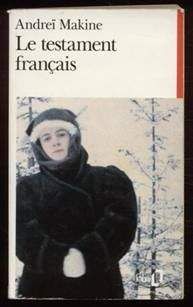Дайана Халперн - Психология критического мышления

Помощь проекту
Психология критического мышления читать книгу онлайн
Norris S. P., Ennis R. H. (1989). Evaluating critical thinking. Pacific Grove, CA: Critical Thinking Press Software.
Nutrition Action Health Letter. (1991, July/Aug) Eater's Digest, p. 13.
Oppenheimer J. R. (1956). Analogy in science. American Psychologist, 11,127-135.
Ortho Pharmaceutical Corp. (1979). The pill-After your doctor prescribes… Raritan, NJ: Author.
Orwell G. (1949). 1984. New York: Harcourt, Brace.
Osborn A. F. (1963). Applied imagination: Principles and procedures of creative problem solving (3rd rev. ed.). New York: Scribner's.
Osgood С. Е. (1953). Method and theory in experimental psychology. New York: Oxford University Press.
Oskamp S. (1965). Overconfidence in case-study judgments. Journal of Consulting Psychology, 29, 261-265.
Palincsar A. S., Brown A. L. (1984). Reciprocal-teaching of comprehension-monitoring activities. Cognition and Instruction, 1, 117-175.
Papanek V. J. (1977). Tree of life: Bionics. In S. J. Par-nes, R. B. Noller, : A. M. Biondi (Eds.), Guide to creative action: Revised edition of creative behavior guidebook. New York: Scribner's.
Parducci A. (1968). The relativism of absolute judgments. Scientific American, 219, 84-90.
Park D. С (1992). Applied cognitive aging research. In F. I. M, Craik, T. A. Salthouse (Eds.), The handbook of aging and cognition (pp. 449-494). Hills-dale, NJ: Lawrence Erlbaum Associates.
Parnes S. J. (1967). Creative behavior workbook. New York: Scribner's.
Parnes S. J., Noller R. В., Biondi A. M. (1977). Guide to creative action: Revised edition of creative behavior guidebook. New York: Scribner's.
Patterson M. E., Dansereau D. F., Wiegmann D. A. (1993). Receiving information during a cooperative episode: Effects of communication aids and verbal ability, Learning and Individual differences, 5, 1-11.
Paulos J. A. (1994, March). Commentary: Countingon dyscalculia. Discover, p. 30-36.
Payne I. W, Bettman J. R., Johnson E. J. (1993). The adaptive decision maker, Cambridge, England: Cambridge University Press.
Pea R. D.t Hawkins J. (1987). Planning in a chore-scheduling task. In S. L. Friedman, E. K. Scholnick, R. R. Cocking (Eds.), Blueprints for thinking: The role of planning in cognitive development (pp. 273-302). Cambridge, MA: Cambridge University Press.
Peck J. (1986). Not killing is a crime? In B. Lown E. Chazov (Eds.), Peace: A dream unfolding (p. 146). Ontario, Canada: Somerville House Books Ltd.
PellegrinoJ. W., Goldman S. R. (1983). Developmental and individual differences in verbal and spatial reasoning. In R. F. Dillon R. R. Schmeck (Eds.), Individual differences in cognition (pp. 137-180). New York: Academic.
Perfetto C. A., Bransford J. D., Franks J. J. (1983). Constraints on access in a problem solving context. Memory Cognition, 13, 24-31.
Perkins D. N. (1981). The mind's best work: A new psychology of creative thinking. Cambridge, MA: Harvard University Press.
Perkins D. N. (1985). Postprimary education has little impact on informal reasoning, Journal of Educational Psychology, 77, 562-571.
Perkins D. N. (1986). Knowledge as design. Hillsdale, NJ: Lawrence Erlbaum Associates.
Perkins D.N.(988). Creativity and the quest for mechanism. In R. J. Sternberg E. E. Smith (Eds.), Psychology of human thought. New York: Cambridge.
Perkins D. N… Lochhead J., Bishop J. С (Eds.). (1987). Thinking. The second international conference. Hillsdale, NJ: Lawrence Erlbaum Associates.
Pestel В. С (1993). Teaching problem solving without modeling through «Thinking Aloud Pair Problem Solving.» Science Education, 77(1), 83-94.
Phillips И. (1961). My best puzzles in logic and reasoning. New York: Dover.
Piper D. (1985). Syllogistic reasoning in varied narrative contexts: Aspects of logical and linguistic development. Journal of Psycholinguistic Research, 14, 19-43.
Pitt J., Leavenworth R. (1968). Logic for argument. New York: Random House.
Pious S. (1993). The psychology of judgment and decision making. New York: McGraw-Hill.
Pogrow S. (1992). A validated approach to thinking development for at-risk populations. In С Collins : J. N, Mangieri (Eds.), Teaching thinking: An agenda for the 21 st century (pp. 87-101). Hillsdale, NJ; Lawrence Erlbaum Associates.
Poincare H. (1929). The foundations of science. New York: Science House.
Polya G. (1945). How to solve it: A new aspect of mathematical method. New York: Doubleday.
Polya G. (1957). How to solve it: A new aspect of mathematical method (2nd ed.). Garden City, NY: Dou-bleday.
Polya G. (1962). Mathematical discovery (Volume 1). New York: Wiley.
PosnerM. I. (1973). Cognition: An introduction. Glen-view, IL: Scott, Foresman.
Postman N., Powers S. (1992). How to watch TV news. New York Penguin.
Potts G. R. (1972). Information processing strategies used in the encoding of linear orderings. Journal of Verbal Learning and Verbal Behavior, 11, 727-740.
Powell D. (1985). The wisdom of the novel: A dictionary of quotations. New York: Garland.
Pratkanis A., Aronson E. (1992). Age of propaganda: The everyday use and abuse of persuasion. New York: Freeman.
Prince G. M. (1970). The practice of creativity. New York: Harper.
Quattrone G. A., Jones E. E. (1980). The perception of variability within in-groups and out-groups: Implications for the law of small numbers. Journal of Personality and Social Psychology, 38, 141-152.
Raia E. (1994, June 2) Russian style. Purchasing, pp. 28-29.
RAND Corporation. (1992, Fall). Health care and the uninsured: Who will pay? RAND Research Review, XVI, 6-8.
Raphael B. (1976). The thinking computer: Mind inside matter. San Francisco: Freeman.
Renshon S. A. (1992). The psychology of good judgment: A preliminary model with some applications to the Gulf War. Political Psychology, 13, 477-495.
Resnick L. B. (1985). Cognition and instruction. In B. L. Hammonds (Ed.), Psychology and learning: The master lecture series (pp. 127-186). Washington, DC: American Psychological Association.
Restak R. M. (1988). The mind. Toronto: Bantam.
Reyes R. M. Thompson, W. C, Bower, G. H. (1980)? Judgmental biases resulting from differing availabilities of arguments. Journal of Personality and Social Psychology, 39, 2-12.
Rips L J. (1988). Deduction. In R. J. Sternberg E. E. Smith (Eds.), The psychology of human thought, (pp. 116-152). New York: Cambridge University Press.
Roediger H. L. Ill (1990). Implicit memory: Retention without remembering. American Psychologist, 45, 1043-1056.
Rokeach M. (1960). The open and closed mind. New York: Basic Books.
Rosch E. (1977). Human categorization. In N. Warren (Ed.), Studies m cross-cultural psychology (Vol. 1). New York: Academic Press.
Rosenthal R., Fode K. L (1963). The effect of experimental bias on the performance of the albino rat. Behavioral Science, 8, 183-187.
Ross J., Laurence K. A. (1968). Some observations on memory artifice. Psychonomic Science, 13,107-108.
Rothenberg A. (1979). The emerging goddess. Chicago: University of Chicago Press.
Rubinstein J., Slife В. D. (1982). Taking sides: Clashing views on controversial psychological issues. Guilford, CT: Dushkin.
Rubinstein M. F. (1975). Patterns of problem solving. Englewood Cliffs, NJ: Prentice-Hall.
Rubinstein Af. /*".(! 980). A decade of experience in teaching an interdisciplinary problem-solving course. In D. J. Tuma F. Reif (Eds.), Problem solving and education: Issues in teaching and research. Hillsdale. NJ: Lawrence Erlbaum Associates.
Rubinstein M. R., PfeifferK. R. (1980). Concepts in problem solving. Englewood Cliffs, NJ: Prentice-Hall.
Ruggiero V. R. (1995). Beyond feelings; A guide to critical thinking (4th ed.). Mountain View, CA: Mayfi-etd. Sadler, W. A., Jr., Whimbey, A. (November, 1985). A holistic approach to improving thinking skills. Phi Delta Kappan, 67, 199-202.
Sapir E. (1960). Culture, language and personality. Berkeley: University of California Press.
Schafly P. (1993, July 21). A mental health care nightmare. The Washington Times, (p. G4).
Schank R. C, Childers R. C. (1988). The creative attitude: Learning to ask and answer the right questions. New York: Macmillan.
Schauble L., Glaser R. (1990). Scientific thinking in children and adults, in D. Kuhn (Series Ed., Vol. Ed). Contributions to Human Development: Vol. 21. Developmental perspectives on teaching and learning thinking skills (pp. 9-27). New York: Basel, Karger.
Schick Т., Jr., Vaughn L. (1995). How to think about weird things. Mountain View, CA: Mayfield.
Schoenfeld A H. (1979). Can heuristics be taught? In J. Lochhead J. Clement (Eds.), Cognitive process instruction: Research on teaching skills. Philadelphia: Franklin Institute Press.
Schoenfeld A. H. (1985). Mathematical problem solving. New York: Academic Press.
Schoenfeld A. H., Herrmann D. J. (1982). Problem perception and knowledge structure in expert and novice mathematical problem solvers. Journal of Experimental Psychology: Learning, Memory, and Cognition, 5, 484-494.
Scholnick E. K., Friedman S. L. (1987). The planning construct in the psychological literature. In S. L. Friedman, E. K. Scholnick R. R. Cocking (Eds.), Blueprints for thinking: The role of planning in cognitive development (pp. 3-38). Cambridge. MA: Cambridge University Press.
ScrivenM. (1976). Reasoning. New York: McGraw-Hill.
Searleman A., Herrmann D. (1994). Memory from a broader perspective. New York: McGraw-Hill.
Sears A., Parsons J. (1991). Towards critical thinking as an ethic. Theory and Research in Social Education, 19(1), 45-68.
Seech Z. (1993). Open minds and everyday reasoning. Belmont, CA: Wadsworth.
Segal /. W., Chipman S. E, Glaser R. (Eds.). (1985). Thinking and learning skills: Vol. I. Relating instruction to research. Hillsdale, NJ: Lawrence Erlbaum Associates.
Seligman M. (1991). Learned optimism. New York: Knopf.
Shaklee H. (1987, November). Estimating cumulative risk: Flood and contraceptive failure. Paper presented at the Twenty-Eighth Annual Meeting of the Psychonomic Society, Seattle, WA.
Shanteau J., Grier M., Johnson /., Bemer E. (1991). Teaching decision-making skills to student nurses. In J. Baron R. V. Brown (Eds.), Teaching decision making to adolescents (pp. 185-206). Hills-dale, NJ: Lawrence Erlbaum Associates.
Shaver K. G. (1981). Principles of social psychology. Cambridge, MA: Winthrop.
Shaw G. A., de Mers S. T. (1986-1987). Relationships between imagery and creativity in high-IQ children. Imagination, Cognition Personality, 6(3), 247-262.
Shermer M. (1992). Anecdotes do not make a science: The skeptics reply. Skeptic, 1, 18-19.
Shubik M. (1971). The dollar auction game: A paradox in noncooperative behavior and escalation. Journal of Conflict Resolution, 15, 109-111.
Siegel E. (1991, May). Persuasion and decision-making. APS Observer, p. 8.
Simon H. A. (1977). The psychology of scientific problem solving. In H. A. Simon (Ed.), Models of discovery. Dordrecht, Netherlands: D. Reidel.
Simon H. A., Kaplan С A. (1989). In M. I. Posner (Ed.), Foundations of cognitive sciences (pp. 1 -47). Cambridge, MA: MIT Press.
Simonson /., Nowlis, S. M., Simonson, Y. (1993). The effect of irrelevant preference arguments on consumer choice. Journal of Consumer Psychology, 2, 287-306.
Singer В., Benassi V. A. (1981). Occult beliefs. American Scientist, 69, 49-55.
Sinnott J. D. (Ed.). (1989). Everyday problem solving: Theory and applications. New York: Praeger.
Skeptic. (1995). Race and IQ.3.
Slovic P. (1987). Perception of risk- Science, 236,, 280-285.
Slovic P., Fischhoff, Lichtenstein S. (1986). In H. Arkes K. R. Hammond (Eds.), Judgment and decision making; An interdisciplinary reader. Cambridge, MA: Cambridge University Press.
Smedslund J. (1963). The concept of correlation in adults. Scandinavian Journal of Psychology, 44, 165-173.
Smith L. (1992, June 2). Rick's place revisited. The Los Angeles Times, p. Al.
Smith M. U. (1992). Expertise and the organization of knowledge: Unexpected differences among genetic counselors faculty, and students on problem categorization tasks. Journal of Research in Science Teaching, 29(2), 179-205.
Smith M. U. (1988). Successful and unsuccessful problem solving in classical genetic pedigrees. Journal of Research in Science Teaching. 25(6), 411-433.
Smith R. A. (1995). Challenging your perceptions: Thinking critically about psychology. Pacific Grove, CA: Brooks/Cole.
Smith S. M., Btankenship S. Я. (1991). Incubation and the persistence of fixation in problem solving. American journal of Psychology, 104(1), 61-87.
























